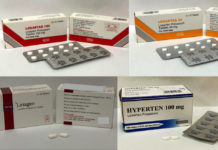 |
| Performing Mixto Laser Resurfacing on my colleague Dr Chua Han Boon. Yup, that is what Sloane Doctors do when they see each other – say hi with a laser/filler/Botox. |
 |
| Raw Skin after Total Skin Resurfacing |
The term “Laser Resurfacing” often conjures up images of bloodied, swollen faces which take weeks to heal. That was true for procedures long ago, before the introduction of fractional lasers. In the past, to treat acne scars, the entire skin surface had to be ablated – leaving the skin raw and sensitive, taking weeks to heal. The results was astounding, but such harsh lasers were not suited for Asian skin as we tend to suffer from post treatment hyperpigmentation more. Other problems such as scarring and infection were also known risks.
Fractional Laser Resurfacing
 |
| Fractional Lasers treat only a percentage of the skin surface |
Everything changed when Fractional Laser Resurfacing was introduced in 2001.Fraxel, the first fractional laser, practically revolutionalised the way laser resurfacing was carried out. The principle is simple – instead of burning away all the skin, why not burn away a percentage, but do multiple sessions? This way, we can reap the benefits of laser resurfacing, but with less downtime and complications because we are leaving healthy bits of skin in between the lasered zones. This allows the skin to heal much faster. Downtime was now only 1-2 weeks, a vast improvement from before.
Much has progressed since 2001, with hundreds of other fractional lasers appearing on the market. The original Fraxel Laser, used an Er:Glass medium. This did not ablate the skin, but rather heated it up.
Then came the Carbon Dioxide (CO2) Fractional Lasers. These lasers used Carbon Dioxide as a medium, and unlike the Fraxel, truly ablated skin tissue, leaving tiny scabs in the skin after (explaining the burnt skin smell during the procedure, and the visible brown spots after). CO2 Fractional Lasers have been shown to be very effective, by virtue of the fact that skin is being burnt off and renewed – it is now widely regarded by experts as the gold standard for treating depressed acne scars. The CO2 laser we use in The Sloane Clinic is the Mixto Laser.
DownTime Woes
Despite the improvement in downtime and safety profile, Fractional Laser Resurfacing still gives you some social downtime – Fraxel leaves your skin red for about 5 days, while Mixto leaves it brown for about 5, then red for another 2 days or so. For busy busy Singaporeans, this is still unacceptable, leaving many people afflicted with acne scars who wish to have them treated, but are unable to do so. Sun avoidance is also crucial when undergoing fractional laser resurfacing. Post treatment hyperpigmentation can still if you are not careful with sun protection after.
 |
| Skin browning 2days after Mixto |
The nature of fractional laser resurfacing – treating only a percentage of skin at a time- requires that multiple sessions are performed before good results are seen. Oftentimes, my patients undergo 1 or 2 sessions, then do not come back anymore, because they cannot afford the downtime. Mixto is by far my favourite laser procedure, but so few patients reap its benefits because they chicken out after they hear about the 5 day bronzed look – I realised out not everyone is like me, still going about my normal activities despite looking like Godzilla.
The picture on the right shows the intense browning which occurs 2 days after Mixto Laser. This was 3 years ago, after I Mixto-ed myself (which explains the poor placement of shots and visible grids – hey it is not easy to aim properly when you are in pain!) It is very visible and difficult to hide with make-up due to the flaky nature of the skin. Many of may patients find this unacceptable.
“Lite” Laser Resurfacing – Mixto
 |
| Myself, a few hours after Mixto Lite, with just mild redness. I am seen here with Shinny, a friendly, healthy dog rescued from being nearly put to sleep by her heartless owner. |
After mulling over how to get the best benefits out of this amazing treatment, we came up with a simple solution – lower the treatment density! By bringing down the treatment parameters, and spot treating the problem areas, the problem of downtime is now a much lesser one.
We introduced Fraxel Light some time ago – a lite version of Fraxel Laser, allowing for gentle rejuvenation – not so great for acne scars, but fantastic for pigmentation, skin tone, fine lines. Redness was mild and only for 1 day, acceptable to almost everyone.
Mixto, similarly, has a ‘lite’ version now – with much less browning and downtime. With the new treatment, redness barely lasts a day, and the browning for another 1 day. But the redness and browning is so mild, it can easily be covered with makeup, or go unnoticed unless someone scrutinizes yous skin up close. The picture above was taken 2 days ago, a few hours after undergoing Mixto Lite. You can see the mild redness, which can easily pass off as a sunburn. The procedure is also safe enough for me to visit a newly rescued dog at SOSD Rehabilitation Centre after, with lots of sunscreen of course.
Mixto Lite is excellent for minimising pores, improving acne scars, skin-tone and rejuvenating the eye area. There is a downside of course – with less skin treated each time, you will need more sessions to achieve good results. Typically, we recommend a course of 6 sessions, performed 3-4 weekly. The big plus, of course, is minimal disruption to your daily schedule. After a program of 6, we can review again, to see if further treatments are required.



















How much does each session costs???<br />
Hi! Each session comes up to about $700 with the program.